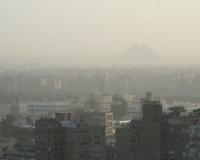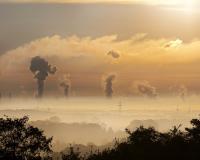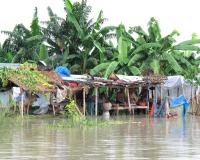
Vibrant Environment
Environmental Justice
All | Biodiversity | Climate Change and Sustainability | Environmental Justice | Governance and Rule of Law | Land Use and Natural Resources | Oceans and Coasts | Pollution Control

The COVID-19 pandemic is bringing to light many intersectional divides in the United States that mainstream society can no longer ignore. Lovinia Reynold’s blog last week looked at how environmental racism is linked to higher COVID-19 mortality rates among Black communities.

Black people are bearing the brunt of COVID-19’s impact. Cities such as the District of Columbia, Milwaukee, and St. Louis and states such as Illinois, Louisiana, Michigan, and Mississippi have released data demonstrating that Black people make up a disproportionate number of COVID-19-related deaths. These deaths are due in no small part to centuries of structural inequality that limit access to what public health experts call the social determinants of health.

With the 50th Anniversary of Earth Day still on our minds, air quality is thriving throughout the United States’ most populous areas. It is a goal long fought for by leaders in environmental law and policy, but it has only been achieved with the cost of the devastating COVID-19 pandemic.

In “Animal Agriculture Liability for Climatic Nuisance: A Path Forward for Climate Change Litigation?,” Prof. Daniel E. Walters lays out a new path for climate litigation: environmental litigators should bring federal public nuisance suits to remedy environmental harms caused by animal agriculture.

Drinking water contamination in Flint, Michigan, has garnered nationwide attention, but it is neither isolated, nor a primarily urban problem. As Madeline Kane explains in the April issue of ELR—The Environmental Law Reporter, a hidden water crisis is straining thousands of smaller communities that share Flint’s risk factors—shrinking populations, social marginalization, and deficient funds.

It is now half a century since the first Earth Day. Not only did I help run our school’s “teach in” in 1970, it is also 50 years since my entrance into environmental journalism. A first-person history may help to affirm the importance of the environmental protections that soon followed, as well as of a robust student press to push today’s issues.

Over the past few years, considerable energy has been devoted toward advancing environmental justice (EJ) at the state level. State agencies can be robust laboratories for experimenting with ways to advance EJ, as they’re often tasked with making decisions under state and federal environmental law. As EJ pioneer Charles Lee explains in the March issue of ELR—The Environmental Law Reporter, state lessons can cross-fertilize and inform work at other levels of government, and the role of nongovernmental players is also critical to driving transformative change. Lee believes it is essential that those working to advance EJ systemically expand their discourse.

The U.S. Court of Appeals for the Fourth Circuit on Tuesday, January 7, 2020, explicitly relied on environmental justice (EJ) concepts to vacate and remand a Virginia state air pollution permit for a compressor facility associated with an interstate natural gas pipeline. This is one of only a very few federal court decisions to address EJ expressly, and is noteworthy because of its explicit application of EJ elements.

In the past, some domestic and international attempts to alleviate the burdens of migrant populations and establish legal protections for them have been implemented, but many of these protections are not specific enough and lack legally binding measures adequate to ensure that peoples displaced by weather-related disasters are protected on a global scale. International norms are important, as they can at least symbolically set a standard that national governments can follow.

Countries around the world are slowly sinking and the list of vulnerable communities is only getting longer. According to the International Displacement Monitoring Center, 28 million people in 2018 were displaced from their homes due to regional conflict, violence, and environmental disasters.